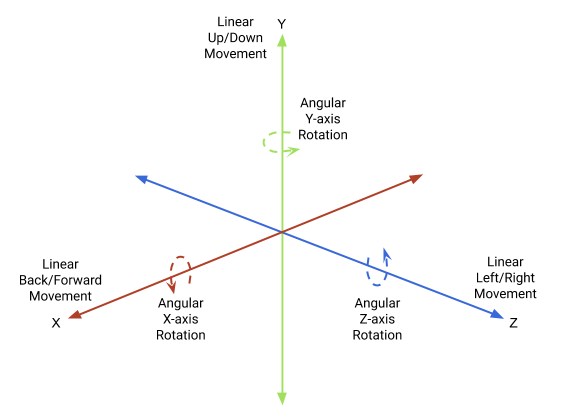A Joint component connects a Rigidbody to another Rigidbody or a fixed point in space. Joints
apply forces that move rigid bodies, and joint limits restrict that movement. Joints give Rigidbodies the following degrees of freedom:
关节元素连接一个刚体至另外一个刚体或者空间中的一个固定节点。
关节施加使刚体运动的力,关节极限限制了运动。 关节赋予刚体以下自由度:

Character Joint:Emulates a ball and socket joint, like a hip or shoulder. Constrains rigid body movement along all linear degrees of freedom, and enables all angular freedoms. Rigidbodies attached to a Character Joint orient around each axis and pivot from a shared origin.
模拟球窝关节,例如臀部或肩膀。 沿所有线性自由度约束刚体运动,并实现所有角度自由度。 附着在角色关节上的刚体围绕每个轴定向并从共享原点枢转。
Configurable Joint:Emulates any skeletal joint, like those in a ragdoll. You can configure this joint to force and restrict rigid body movement in any degree of freedom.
模拟任何骨骼关节,例如布娃娃中的那些。 您可以配置此关节以任何自由度强制和限制刚体的移动。
Fixed Joint:Restricts the movement of a rigid body to follow the movement of the rigid body it is attached to. This is useful when you need rigid bodies that easily break apart from each other, or you want to connect the movement of two rigid bodies without parenting in a Transform hierarchy.
限制刚体的运动以跟随其所附着的刚体的运动。 当您需要容易相互分离的刚体,或者您想连接两个刚体的运动而无需在“变换”层次结构中进行父级化时,这很有用。
Hinge Joint:Attaches a rigid body to another rigid body or a point in space at a shared origin and allows the rigid bodies to rotate around a specific axis from that origin. Useful for emulating doors and finger joints.
将一个刚体附加到另一个刚体或空间点上,位于一个共享的原点,并允许刚体从该原点绕特定轴旋转。 用于模拟门和手指关节。
Spring Joint:Keeps rigid bodies apart from each other but lets the distance between them stretch slightly. The spring acts like a piece of elastic that tries to pull the two anchor points together to the exact same position
使刚体彼此分开,但使刚体之间的距离略微伸展。 弹簧就像一块松紧带,试图将两个锚点拉到完全相同的位置。

